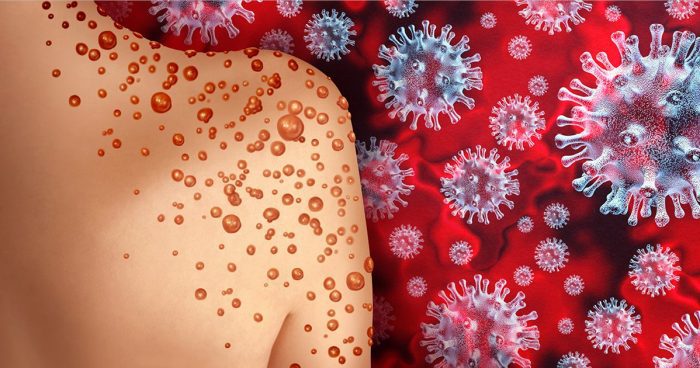All 750 of Suffolk County’s monkeypox vaccinations claimed in under two hours
Amid an increase in cases of a virus caused primarily by close skin contact, Suffolk County started to provide vaccinations this week.
By appointment only, Suffolk County is administering 750 vaccinations to eligible people at pop-up clinics on Fire Island. Within under two hours, the county, with help from Northwell Health, had received requests for all of the available vaccines.
“It was heartwarming that so many people signed up for the vaccine right away in the at-risk community,” said Dr. David Galinkin, an infectious disease specialist at Port Jefferson-based St. Charles Hospital. People want to “stop this in its tracks.”
While monkeypox was discovered in 1958 and had its first reported cases in humans in 1970, the current limited outbreak is the first time health officials documented it spreading through person-to-person contact in the United States. Previous outbreaks involved a returning traveler from Africa or through contact with an infected animal.
As of the end of last week, Suffolk County had reported three cases of monkeypox.
About 98% of the cases in the country were reported among members of the gay and bisexual community of men who have sex with other men, Galinkin said.
A rare condition, monkeypox has symptoms including fever, headache, muscle aches, swollen lymph nodes, chills, exhaustion, and a rash that looks like pimples or blisters on people’s faces, inside their mouths and on hands, feet, chest
and genitals.
People who contract monkeypox can have symptoms that last for two to four weeks.
“While the current global outbreak appears to have heavily impacted [men who have sex with men], it is important to understand that this is a disease that is transmitted by intimate prolonged contact with an infected individual,” Dr. Susan Donelan, medical director of Healthcare Epidemiology at Stony Brook Medicine, explained in an email.
Medical officials pointed out that monkeypox doesn’t present the same threat to public health as COVID-19, which can be spread by breathing in air contaminated with viral particles.
Health officials, however, are urging people to take steps to protect themselves against a virus that can be uncomfortable and that can spread to others through various levels of contact.
“Most important to understand is that monkeypox is not a sexually transmitted disease,” Dr. Adrian Popp, chair of Infection Control at Huntington Hospital/Northwell Health. “It is sufficient to touch an active lesion to be exposed.”
Prevention
The Centers for Disease Control and Prevention has considerable information on a website dedicated to monkeypox, which people can access at the link: www.cdc.gov/poxvirus/monkeypox
The CDC urges people to avoid close skin to skin contact with the rash. The center also recommends that people not kiss, hug, cuddle or have sex with someone who has the virus.
People should not handle or touch the bedding, towels or clothing of someone who is sick. To protect themselves, those who might have come in contact with a person who has monkeypox should wash their hands with soap and water or use an alcohol-based hand sanitizer.
Adding to the list of concerns during pregnancy, women can spread the virus to their fetus through the placenta.
Unlike COVID, people who do not have monkeypox symptoms can’t spread the virus to others.
Vaccinations
The most commonly used vaccinations involve two shots that are 28 days apart. Like vaccines for COVID, the optimal protection is expected two weeks after the second dose, Donelan said.
The CDC recommends that people who are close personal contacts of those with the virus get the vaccine. The center also urges those who may have been at increased risk of exposure, through laboratory testing, to consider receiving shots as well.
The CDC suggested that people get the vaccines within four days from the date of exposure for the best chance to avoid developing the disease.
Vaccines given between four and 14 days after exposure may reduce symptoms but may not prevent the disease.
Combining the vaccination with self-isolation and other measures can control outbreaks and prevent further transmission of the virus, the CDC explained.
Monkeypox vaccines aren’t as readily available as those for COVID.
“As vaccine production ramps up, we will expand our operations to ensure that anyone who wants to get vaccinated is able to,” County Executive Steve Bellone (D) said in a statement.
Dr. Gregson Pigott, county health commissioner, also explained in a statement that he encourages “those who may be at risk to get the vaccine and, in the meantime, be cautious with your intimate relations.”
COVID-19 update
COVID, meanwhile, continues to spread through Suffolk County, despite the warmer weather and the greater opportunity for outdoor interactions.
As of July 10, the seven-day average for positive tests was 9.3%, according to the New York State Department of Health. That is up from 7.5% on a seven-day average in June.
“The incidence of COVID has increased in the last few weeks in Suffolk County,” wrote Popp, of Huntington Hospital, which, earlier this week, had 15 COVID patients at the hospital.
The high current positive rate is “likely due to the fact that most COVID-related prevention measures have been discontinued” including masks and social distancing and the current omicron subvariants are also more transmissible, Popp said.
As of July 11, Stony brook University Hospital had 52 positive COVID inpatients, compared with 39 on June 11, according to Stony Brook Medicine officials.
Over the past weekend, Galinkin admitted more patients with COVID at St. Charles Hospital than he had in months.
“It seems to be on the rebound,” he said, as the BA-5 strain is the “most contagious strain we’ve seen,” he said. He expects the numbers to continue to rise.
COVID symptoms from BA-4 and BA-5, which are the dominant variants in Suffolk County are milder than previous types. Dr. Sharon Nachman, chief of the Division of Pediatric Infectious Disease at Stony Brook Children’s Hospital, wrote in an email. The hospital is also seeing much less frequent loss of smell or taste with the current variant.
Nachman is concerned about possible increased rates of infection in the fall and winter.
“Overlying that concern is the heightened risk of our routine, formerly seasonal viruses co-occurring with COVID leading to more illness visits and hospitalizations, especially among our most vulnerable populations,” Nachman said in an email.
Galinkin said the higher level of COVID infections underscores the importance of vaccinations.
“It’s our best defense against this,” he said. “There’s talk of a new and improved vaccine coming out in the fall” that will provide protection against omicron variants. “Hopefully, people will take advantage of that.”







